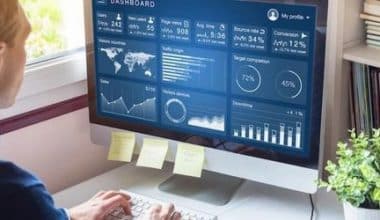Today’s world places a greater emphasis on remote management than ever before, both for enterprises and for individuals, particularly in light of the development of technology and the demand for flexible work schedules. It’s now simpler than ever to control and keep an eye on devices from a distance thanks to the Remote Management Module, which is now available for Apple products like the Mac and iPad. Adopting remote management techniques will help you streamline your productivity and stay connected to your device wherever you are, whether you’re a busy professional or a small business owner.
What Is Remote Management
The term “remote management” refers to the method of controlling hardware or software from a distance. Without requiring physical access to the equipment, this can include monitoring, updating, troubleshooting, and configuring them.
Modern technology has made remote management more and more common and essential for enterprises and organizations of all kinds. Businesses may now remotely manage their networks and devices, increasing productivity and efficiency. Furthermore, since specialists no longer need to travel to multiple places to fix problems, remote management can also assist lower the costs associated with on-site management. In summary, remote management is a potent tool that helps enterprises to maintain contact with their equipment and systems, wherever they may be.
Remote Management Module
The Remote Management Module is a software application that allows remote management of devices such as PCs and mobile devices. This module enables administrators to monitor and administer devices from a distant location, without the need for physical access to the devices.
Administrators can use the Remote Management Module to accomplish a range of tasks such as deploying software updates, modifying settings, and fixing difficulties. This module also provides real-time device monitoring, allowing managers to swiftly discover and rectify issues. Overall, the Remote Management Module is a strong solution for remotely managing devices, giving managers greater control and flexibility over their devices and systems.
Remote Management Apple
Remote Control Apple is a piece of software that Apple created to allow remote management of Apple products like the Mac and iPad. This application is made to make it simpler for IT managers to manage and keep an eye on devices from a distance, ensuring that they are all secure and up-to-date.
Managers can carry out a variety of operations with Apple’s remote management software, including installing software updates, adjusting settings, and resolving problems. Additionally, this technology offers continuous device monitoring, enabling administrators to see problems early and take swift action. The seamless integration of Remote Management Apple with other Apple tools, like Apple Business Manager, makes it simpler for companies to manage their devices and systems from a distance. Overall, Remote Management Apple is an effective application that enables businesses to securely and effectively manage their Apple devices.
Remote Management Device
Any instrument or piece of software that enables remote management of other devices is referred to as a remote management device. This can apply to desktops, laptops, smartphones, and servers. Equipment for remote management is made to make it easier for administrators to administer and keep an eye on equipment from a distance. They offer a number of capabilities, including real-time monitoring, configuration settings, and software updates. Additionally, since professionals no longer need to travel to multiple places to fix problems, remote management devices can assist lower the costs associated with on-site administration. All things considered, remote management tools are effective tools for companies and organizations of all kinds, allowing them to stay connected with their equipment and systems wherever they are.
Remote Management Mac
Remote Management Apple’s Mac and iPad are tools that provide remote management of Mac computers. This program enables administrators to administer and monitor Mac machines from distant locations. Managers can use Remote Management Mac to accomplish a range of activities, including software upgrades, security adjustments, and troubleshooting. Furthermore, this program monitors Mac devices in real-time, allowing administrators to swiftly identify and rectify issues. Overall, Remote Management Mac is a strong solution that assists enterprises and organizations in securely and efficiently managing their Mac machines, regardless of their location.
How Do I Set Up Remote Management?
Remote management configuration is determined by the device and program utilized. To begin, make sure the device is linked to the internet. Then, on the device that will be used for remote control, download and install the remote control program or application. Then, adjust the settings and connect to the device being handled securely. It is also critical to implement appropriate authentication and permission methods to guarantee that only authorized personnel have access to the managed device. Finally, test the remote control link to ensure it is operational.
Can You Remove Remote Management From iPhone?
Yes, you can disable remote management on an iPhone. However, the actual procedure will be determined by the remote control program or application used to install the control profile. Remote control profiles are typically uninstalled by heading to the iPhone’s Settings app, selecting General, and then Device Control. Select the management profile and then press Remove Management. Some profiles, however, may require a passcode or other authentication before they may be deleted.
What Is the Use of Remote Management?
The purpose of remote control is to enable administrators to administer and monitor equipment from a distance. Administrators can manage devices without physically being present, which gives flexibility and ease.
Remote administration allows administrators to execute a variety of operations from a central location, such as software upgrades, security setups, and troubleshooting. This can assist cut costs associated with on-site management while also increasing efficiency by allowing administrators to handle several devices at the same time. Furthermore, remote administration allows administrators to monitor devices in real-time, allowing them to discover and handle issues before they become big difficulties. Overall, remote management is a strong tool that enables businesses and organizations to manage their devices and systems securely and efficiently, regardless of where they are situated.
What Are the Advantages of Remote Management?
Efficiency gains, cost savings, and enhanced security are all benefits of remote control. Administrators may control devices remotely from a single location, saving both time and resources. Administrators may do operations like software upgrades and troubleshoot remotely with the help of remote control, eliminating the need for on-site visits and related travel expenses. Furthermore, remote administration can boost security by enabling managers to promptly see and resolve problems like malware infestations or unauthorized access attempts. Overall, remote control is a potent tool that enterprises and organizations can use to streamline operations, strengthen security, and cut expenses.
Why Does My iPad Say Remote Management?
Your iPad may say “remote management” if it has been enrolled in a mobile device management (MDM) program or is being remotely managed by an administrator. This could be the case if you are using an iPad provided by your school or workplace, as these organizations may use MDM to manage devices and enforce security policies. In some cases, individuals may use a remote control to manage their personal devices, or parents may use it to manage their children’s devices.
How Do You Get Rid of Remote Management on IPAD?
To disable remote administration on iPad, uninstall the control profile that was installed on the device. This is normally accomplished by opening the Settings app, selecting General, and then device management. Select the management profile and then press Remove Management. Some profiles, however, may require a passcode or other authentication before deletion. If the controlling of the device is by a company, you may need to contact the administrator for help deleting the management profile.
How Do You Manage Remotely, and What Tools Do You Use?
Different tools are used for remote control, thus we will only mention the most prevalent ones here. The RMM software can be expanded with additional capabilities for remote monitoring and administration. The following resources help managed service providers and other IT administrators streamline remote control:
# 1. Remote Access
Without remote access, remote control is meaningless. A peer-to-peer communication tool, Remote Access establishes a secure connection to controlled endpoints via the RTP protocol. Because it makes use of common protocols and technologies, the tool requires no specialized setup on the user’s end. This enables remote control of endpoints by IT staff.
# 2. Network Assessment Tool
It enables MSPs and companies to perform comprehensive network scans. They discover vulnerabilities in servers, endpoints, and the network as a whole. Additionally, the application will generate a risk mitigation plan for inspected networks, complete with recommendations for fixing all identified vulnerabilities.
# 3. Auto-Discovery and Deployment Tool
This utility makes it simple to distribute software to a large number of computers through Active Directory. A local area network, or a specific IP address or IP range, and hostname.
# 4. Service Desk
Service Desk is a robust ticket management solution that facilitates the establishment of efficient procedures for both internal and external support teams. Administrators and support workers can monitor and respond to user requests. Also, reassign tickets, generate reports, set up projects, and more on this platform.
# 5. Antivirus and Antimalware
Tools for detecting and eliminating malware and other malicious processes on compromised endpoints, such as antivirus and antimalware software. With its powerful system monitoring tool and fully customized malware scanner, users can easily detect potentially harmful activities and terminate them with a single click.
# 6. Network Assessment
Most MSPs today consider network monitoring to be a crucial RMM Management Tool. Many customers, in an effort to cut costs, choose the “monitoring only” option. But now MSPs can provide better monitoring at no extra cost owing to the Network Assessment Module. You’ll have access to powerful RMM management tools, giving you an advantage over rival businesses and helping you expand your operations.
Remote Management Best Practices
Here are some best practices for remote management:
#1. Use Strong Authentication Methods
Ensure that only authorized personnel can access managed devices by using strong authentication methods such as two-factor authentication or biometric authentication.
#2. Implement Security Policies
Establish and enforce security policies that define the requirements for devices and the network they connect to. This includes password policies, device encryption, and remote wipe capabilities.
#3. Monitor Devices and Network Traffic
Continuously monitor devices and network traffic to identify and address potential security threats or compliance issues.
#4. Regularly Update Software
Keep software and firmware up-to-date to ensure that devices are protected against known vulnerabilities and exploits.
#5. Provide Training
Train employees on the importance of following security policies and best practices, as well as how to identify and report security incidents.
By following these best practices, organizations can minimize the risk of security incidents. Also, ensure that their remote control activities are conducted in a secure and effective manner.
FAQ
Can I disable remote management on my iPhone?
If the device is managed by an organization or is registered in a mobile device management (MDM) program. The administrator who installed it is usually the only one who may remove the management profile.
Where can I get remote management on the iPhone?
Select Settings > General > VPN & Device Management from the menu. If a profile is installed, tap on it to discover what modifications have been made.
How can I prevent someone from tracking my phone?
Navigate to “Settings.” Choose “Location.” Navigate to “Google Location Settings.” Disable “Location Reporting” and “Location History.”
Related Articles
- HOW TO FIND REMOTE JOBS in 2023: Best Easy Guide 
- REMOTE SUPPORT SOFTWARE: What It Is, Features, Examples, and Applications
- WHAT IS REMOTE WORK: Meaning, Examples, Policy & Benefits
- COMPANY ASSET MANAGEMENT SOFTWARE: Top Best Software
- WHAT IS REMOTE WORK: Meaning, Examples, Policy & Benefits






